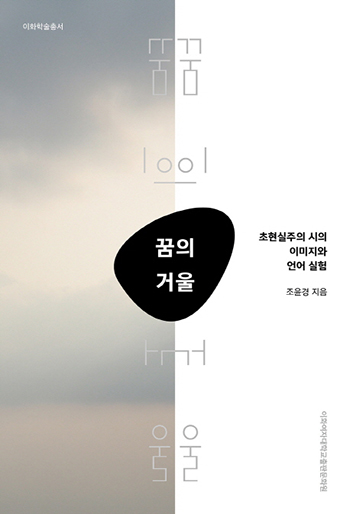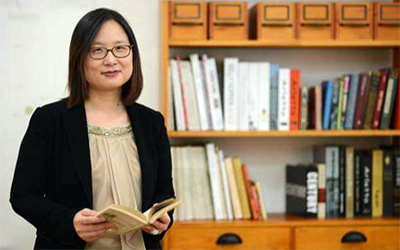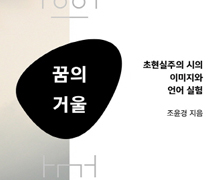본문
Mirror of Dream: images of surrealist poems and linguistic experiments

By Prof. Yunkyung Cho (lunecho@ewha.ac.kr)
Department of French Language & Literature
Surrealist poets attempted to present a new way to observe reality by discovering the wondrous realm behind the conscious behavior of humans that has yet to be explored. They broke down all boundaries between diverse conflicting concepts that are institutionalized and separated, such as reason and madness, rationality and irrationality, everyday life and revolution, and civilization and primitiveness, and sought to liberate psychological power and desires, which had been suppressed by civilization. This book is a study that presents macroscopic explanations and microscopic analyses of surrealist poems. This book helps readers to understand surrealist poems that were previously considered as abstruse through interesting and three-dimensional methods, encompassing primitive artwork that inspired surrealism and past poets who influenced the formation of surrealist poetics, techniques developed by surrealist poets and their various linguistic experiments, and analyses and translations of works by notable surrealist poets.
This book consists of three sections and 10 chapters. The first section explores movements and poets that influenced surrealism in order to identify the mindset and poetics that became the root of surrealism. Chapter 1 discusses primitive art, which is regarded as the precursor to surrealist poetics. Chapter 2 examines the groundbreaking aspects of Lautréamont, a poet who decisively influenced the development of poetic techniques and surrealist poetics. In Chapter 3, this book analyzes Alcools and Calligrammes, the representative poems of Apollinaire, who coined the term "surrealism", with the aim to define his influence on surrealist poetics.
The second section examines the representative poetic techniques of surrealism, including automatism, surrealist plays, poetic collage, and poetic aphorism techniques. Chapter 4 analyzes in detail Les Champs magnétiques, first example for the use of automatism, which was co-authored by André Breton and Philippe Soupault, to identify the creative process and meaning of automatism. Chapter 5 investigates the plays and wordplay devised by surrealists, in order to define the aesthetics of occasionality as a distinctive aspect of surrealism. Subsequently, Chapter 6 discusses techniques to intentionally disassemble existing, conventionalized languages in order to newly restructure such languages through methods including linguistic collage and poetic aphorism.
The third section analyzes the distinct poetic world of leading surrealist poets. Chapter 7 discusses the poems of Paul Eluard. It explores his poetic journey, in which he set women as the main axis of metaphors and amalgamated brilliant and beautiful love poems with fierce and confrontational practical poems. Chapter 8 examines the poems of Robert Desnos, who used the language of dreams and unconsciousness at will, and Chapter 9 analyzes the poetics and poems of André Breton, a leading figure in the surrealist movement who raised questions regarding the shackles and prohibitions imposed on existence as well as the dichotomous thinking that separated the body and mind. The last chapter analyzes the works of Benjamin Péret, who advocated surrealism a longside Breton. Readers will find in this chapter a poet who stimulated the sense of illusion through a rapid pace of speech that is suggestive automatism, and a series of metaphors, which allowed him to succeed in a poetic leap to overcome the conventionalized reality.
The appendix, the last part of the book, contains the representative works of surrealist poetry, including poems referenced in the main text, with versions translated by the author of this book. Surrealist poems are known for their abstruseness and length, which makes it difficult to find translations. By referring to the analysis in the main text in reading the poems, readers will be able to take a more familiar and deeper approach to surrealist poetry.
As surrealism was a global movement across all genres, the surrealist poems and poetics addressed in this book have the potential to make academic contributions to expert researchers in various fields such as plastic arts, photography, and motion pictures, as well as scholars specializing in French poetry. In addition, it is meaningful that the domain of desire and imagination and the liberation of images that surrealists fostered eventually spread globally across Europe, America, Africa and Asia.
Since poets Lee Sang and Jo Hyang first introduced surrealism in Korea, surrealism extended to the nonsense poetry of Kim Chunsu, the raw imagery of Oh Kyu-won, and the non-subject poetry of Lee Seung-hun, thereby establishing the genealogy of Korean surrealism. In this regard, this book will provide meaningful materials for Korean literature researchers who are interested in surrealist poetry. In addition, the imaginative techniques of surrealism, as discussed in this book, provide practical methodology and inspiration in illuminating imagination and creativity, which are important topics in our time.

* Related book
Yunkyung Cho, Mirror of Dream: images of surrealist poems and linguistic experiments, Ewha Womans University Press, October 30, 2018, 510 pages
